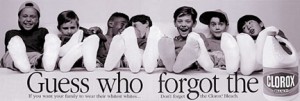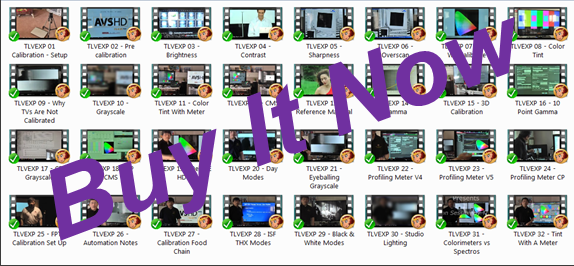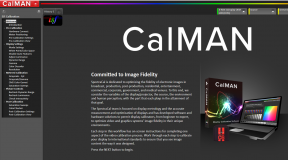[important]”The marketing of a tv set has nothing to do with presenting accurate images, it has everything to do with selling more TVs.”[/important]
If the marketing department of a TV manufacturer that “you” owned, came and told you that they just found out that people will buy more TVs if pictures are green, what would “you,” the owner say? …
“Make the pictures green.”
This game is about selling TVs, it is not about accuracy. And the sooner one gets that through their head, the easier life gets. Accurate images don’t sell to uneducated masses.
And now for the rest of the story …
To start off, a brief walk down memory lane as we look at the history of the Television. For us in North America, this begins around the year 1939, when the founding fathers of the TV system (our NTSC system) started to work on the specs for the system. NTSC stands for “Never Twice the Same Color” for fun or National Television System Committee. While we are at this game of alphabet soup, anyone want to guess what the name of our high definition TV system is called? I’ll give you a clue, it’s not called “HDTV.” It is actually called “ATSC” for the “Advanced Television System Committee.” So back in 1939, one of those founding fathers was actually quoted as saying “One day this TV system of ours is going to be capable of displaying large screen images … images as big as … 19 inches.” This line actually says it all and answers that question that many people have when they try to watch standard definition programming on their new 60″, or 80″ or 120″ sets. Why does the standard definition material look so bad?
The Answer – “… because it is bigger than 19 inches …”
Only the fool or the naive person would believe that a TV is somehow capable of magically creating all new detail out of nothing. If one keeps zooming the image, new detail can continually be found in the signal. Well if one happened to watch “CSI” a lot, then they would believe that this is possible as well as solving all crimes in 42 minutes.
All cable boxes and satellite boxes have TV guides built in. When displayed, these guides always have a picture in picture in the corner of the screen for live television. Even the worst looking channels look pretty decent here. Compared to the size of the TV, look at the size of this picture in picture … how big is that?
So black and white television begins in 1939. We now fast forward in time to the 1952-53 time frame. They are working on the specifications of the color TV system at this time. The Gov’t comes in and mandates that the color TV system has to be backward compatible with the existing B/W system. Part of the rationale here is that TV stations have just made a large investment in equipment to broadcast B/W tv and asking them to buy more equipment for color TV may be too much of a financial burden for some. God forbid, people at home should not be expected to own two televisions …
The question then is, how will the backward compatibility work?
The color TV system actually uses the original B/W tv signal that was already out there and it simply overlays color on top of a black and white image. It is like taking color pencils to a black and white image. So think of our color TV system as two distinct parts; one part B/W tv and one part Color TV. You can see this for yourself on any color image by turning the color control down to the bottom end and watching your colors fall out. On most displays, the bottom end is an image devoid of color. It is black and white. This is the original broadcast TV signal. This applies to both SDTV and HDTV because HDTV had to be backward compatible to support SDTV.
So color TV is two parts; one for black and white and the other for color. But the color TV is not a black and white device. It makes its image based on red, green and blue pixels. (sometimes yellow too) So the first part of the TV equation is that it must take this RGB system to create a neutral black and white image. Not a green tinted B/W or a red tinted one or blue tinted … but a neutral B/W. The TV is more than capable of doing this, but this is where the TV makers deviate from the rules … the “standard.”
Our television companies take a lesson that was learned in the laundry detergent business and they apply it to our displays. “That’s right, you too can get your socks whiter than white!”

What the hell is whiter than white!!! I don’t know, but that sock is clearly whiter than the other sock …
Does anyone remember what color liquid laundry detergent is? Blue. The powder stuff was white powder with blue speckles … as in blue dye.
The laundry detergent industry spent some money looking into the science of how human eyes work and they found out that our eyes are more sensitive to blue than it is to white. Add some blue dye into the detergent to make the whites blue and our eyes will pick up on that blue. We will see it better. Obviously at some point if one were to put too much blue dye into the mix, we just get a blue sock and that does not fool anyone. There is a fine line where blue dye can be added in and our eyes see it, but the brain still says “It looks white to me…” This is where whiter than white lives.
Need some more proof about how our eyes work?
When you drive around at night, which are the car headlights that you see better? Chances are the Xenon blue white bulbs. We perceive them to be brighter than the normal headlights because of the blue in the light. Of course the brightness of car headlights is something that is regulated by the gov’t. One cannot market light bulbs that are so bright that it blinds other drivers causing accidents. We think they are brighter, but they are actually similar to the normal headlights. The blue sensitivity tricks you into thinking that it is brighter.
And now we get back to the marketing of television sets. Instead of making the black and white material neutral according to the rules, the TV makers make this part more blue in order to get blue whites. Blue whites attract people’s attention especially on a showroom floor. We think it is brighter … and since brighter is always better, we now have TVs that sell.
Many people have asked me over the years about why TVs simply don’t come out of the box looking correct … or at least as correct as possible. Heck, I used to be there too. When I first got into the industry back in 1999 or so, I figured that display calibration was a fun hobby, but there would come a time when the TV sets simply got good enough that it made the calibration business completely redundant. I expected that I would be “The last great horse carriage tweaker.” In 1999, looking toward the future, I figured 5 to 7 years was that time frame, so I would not quit my day job. As the years marched forward, I still maintained it would be 5 to 7 years in 2002. By 2004, I just stopped saying that at all. I quit believing what I was telling others, because I had been in the industry long enough and heard enough stories to have to change that original premise. It was wrong.
Why can’t the TVs come out of the box correct? You are witness to the answer. They can, but accurate TVs do not sell. Give the masses what they want … and it isn’t a calibrated image. A calibrated image will lose every time if you put one on the showroom floor. [warning]In a sea of blue looking TV sets, the correct display is the only one that looks yellow.[/warning]
TVs will continue to be set to nice and bright and blue on the showroom floor. It is the nature of the game and what gets most people to buy the TV in the first place. But TVs no longer come from the factory preset to the vivid or dynamic super bright modes to catch your attention.
Something else happened that changed that. (See here)





